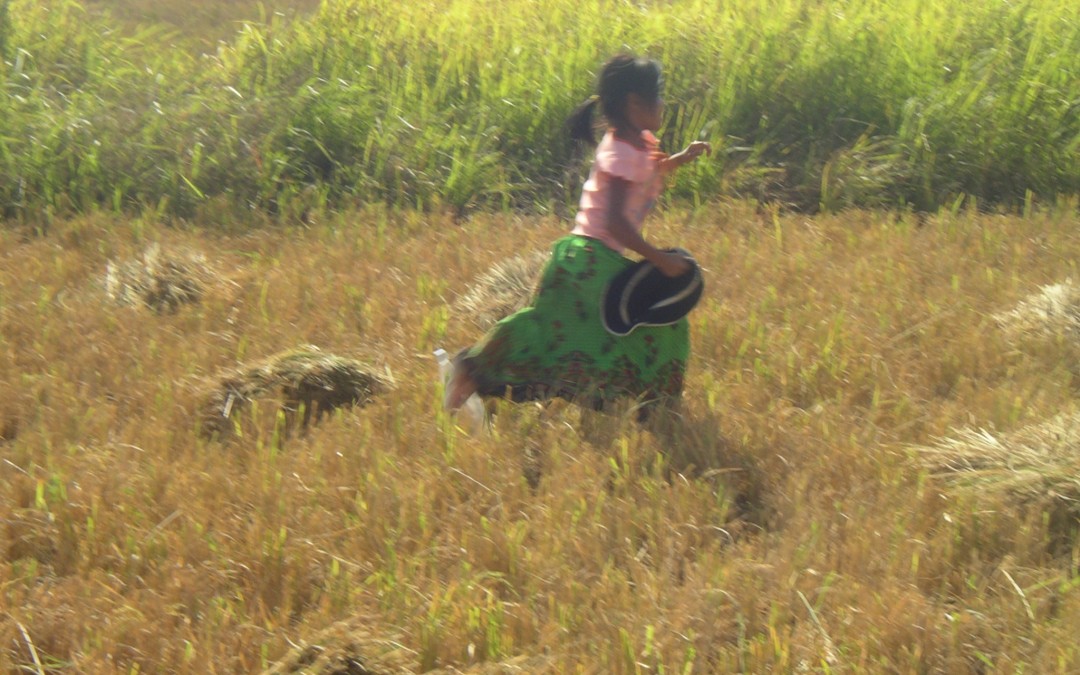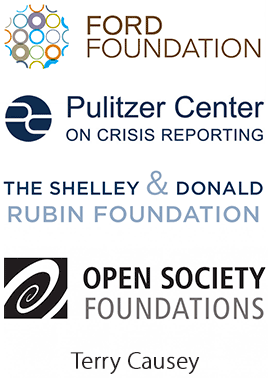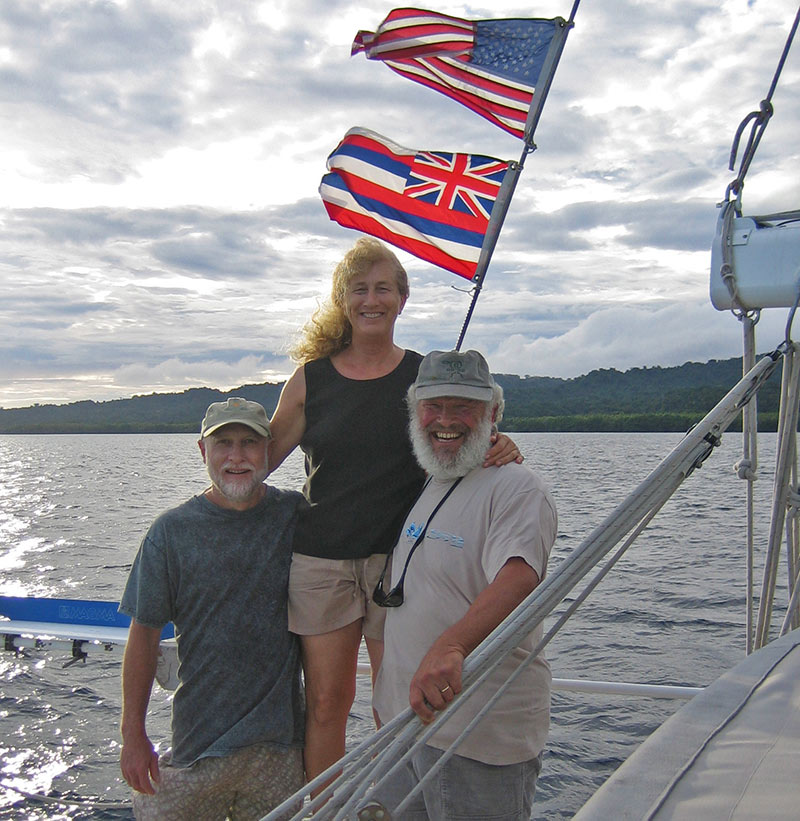Photo by Malia Guyer-Stevens
History
Cambodia is a small country nestled between Thailand, Vietnam and Laos, with a population of just under 15 million. Only a few decades after surviving one of the most recent genocides in history, Cambodians continue to face significant economic and social challenges.
A Violent History
A former French colony, Cambodia gained independence in 1946. In the 1960s the Vietnam War spilled over into the country, and in 1970 American and South Vietnamese forces entered the country and attacked communist bases and supply lines in an attempt to upset the Viet Cong. The high number of casualties created sympathy for the communists – the Khmer Rouge, who began to take control of large parts of the countryside. In 1975, the Khmer Rouge, led by Pol Pot, seized the capital, Phnom Penh, and overthrew the American backed government. The Khmer Rouge quickly evacuated the capital, sending all residents out to rural areas to perform manual labor in their efforts towards a radical form of agrarian communism. In what was called “Year Zero”, the country was renamed Democratic Kampuchea, and all modern, Western or capitalist influence was denounced. In an attempt to rebuild the country on the strict notion that all cultural and traditional practices be destroyed in order for a new, revolutionary culture to take hold, everything from before 1975 was destroyed. Over a million people (from a population of 8 million) died of starvation, disease, torture or execution.
In 1978, Vietnamese troops invaded Cambodia and new opposition factions emerged, but the Khmer Rouge continued to control much of the country. By 1989, peace efforts began in Paris, and in 1991 a comprehensive peace settlement was agreed to. The United Nations was given the mandate to enforce this ceasefire (referred to as the United Nations Transitional Authority in Cambodia). In 1994, Khmer Rouge military officers began to step forward and surrender in exchange for amnesty, and by 1996, Pol Pot was ousted. He was imprisoned by 1996, but died in 1998, before being brought to justice.
In 2001, the Senate approved the formation of a tribunal in order to bring leaders of Khmer Rouge to trial for genocide, and in 2004, the Parliament ratified legislation to set up the UN backed tribunal. In 2007, Kaing Guek Eav (also known as Duch) was officially handed over to the Extraordinary Chambers in the Courts of Cambodia (ECCC), and charged with crimes against humanity.On 3 August, 2010, Duch, the former head of the Tuol Sleng prison, was found guilty of crimes against humanity, grave breaches of the Geneva Conventions, and other crimes; he was sentenced to 35 years in prison for overseeing the torture and killing of more than 12,000 people. On 16 September, 2010 another four former Khmer Rouge leaders were indicted, charged with genocide, torture and religious prosecution.
Poverty
The legacy of the genocide continues – people injured during the war have been left unable to earn a living. And a lack of government structures in the aftermath of the war has resulted in inefficiency and corruption. Many of the governmental and social systems often taken for granted in other countries do not exist. Many Cambodian people are forced to work in informal economic sectors, with no security or other legal frameworks to protect them from poverty. Cambodia is also a country with a large rural, agricultural population – over 80% of the country’s citizens rely on the agricultural industry, which rarely generates enough income for survival. The country is ranked 137 out of 182 countries on the United Nations Human Development Index (2009) and many citizens face limited wage earning options. Over 40% of the population lives on less than $1.25 a day, and the average household earns less than $600 a year.
Families were separated both during and after the war, and many people sought refuge from the difficult conditions of the countryside in larger cities. This lack of social structures meant that for the first time, following the war, many girls were allowed to leave their rural home and migrate to the cities to seek jobs. Most recently, many young women found the garment industry to be more reliable wage earning option, but as of 2005, and with the economic crisis of 2008/9, these jobs have been decreasing (in 2009 a total of 122 factories were shut, leaving over 50,000 people without jobs).
Cambodia’s Not So Hidden Sex Industry
Many women have found themselves, either forcibly, or out of sheer desperation, working in Cambodia’s sex industry. There is a powerful cultural norm that makes women and girls responsible for caring for their parents. Women of all ages seek out work – whatever kind they can get – to be able to provide for their families.
The reasons for such a large-scale sex industry in Cambodia are of course difficult to attribute to any one cause, but in addition to poverty, there a number of social, cultural and contextual characteristics. Male attitudes in Cambodia towards women are one example – some believe that sexual relationships with wives are meant only to be for the purpose of creating children – this means that sexual pleasure is sought out from other places. Taking the virginity of young girls is also a serious problem in Cambodia, with foreign (mostly Asian) and Cambodian men paying up to $4,000 to have sex with virgins, which is believed to be rejuvenating.
In 1992, the first members of UNTAC, the United National Transitional Authority in Cambodia, arrived in the country to set up democratic elections. This arrival of over 20,000 mostly male troops, military observers and civilian police meant an immediate increase in sex workers – statistics show that the number of sex workers in Cambodia during this period rose from about 6,000 to 30,000.
Because the crime is an underground one, it is difficult to know exactly how many girls and women are victims of sex trafficking in Cambodia. Estimates of sex workers range from 30,000 to 60,000 prostitutes in Cambodia – and some argue that as many as 20% of these girls and women have been trafficked. Between 2005 and 2007, 1061 victims of human trafficking were repatriated to Cambodia from outside of the country, through government repatriation schemes, though many more likely occur without being reported. In a 2006 survey of 25 Cambodian NGOs, 179 cases of trafficking were received, but again, the majority of cases are likely unreported.
Sex Tourism
While only approximately 10% of the male clients of prostitutes are Western foreigners, sex tourism is still an issue in Cambodia. The amount foreign men pay is significant in comparison to the remaining 90% of Cambodian clients, and the industry is noticeable across the country, particularly in Siem Reap, where the vast majority of tourists to Cambodia visit. Young girls and women work in brothels in red light districts, karaoke bars and restaurants selling sex.
Trafficking
In Cambodia the sex industry is invariably linked to trafficking; many women and girls come from small villages where they worked on farms – often they are tricked or coerced into working in the sex industry – they are promised good jobs (often in the textile industry, which is believed to be the one industry that can save them) with decent pay, a place to live and the experience of living in the city.
Trafficking networks often employ Cambodian women to approach girls and women in their own villages with enticements of working in the city and earning high wages – in most cases the female trafficker is known and trusted in the communities in which they work. These girls and women often have very few economic options – they work on farms and earn their livings day to day. Traffickers often target these areas after the harvesting season is over – when there is less work to be done. They are promised good jobs, high wages, accommodation and the experience of a bigger city. But these girls and women are then sold – into brothels, massage parlors, karaoke bars or restaurants – where customers pay for sex.
A former sex worker named Mara told us: “I had to work all day, taking clients. When I wasn’t working I was locked up so I wouldn’t run away. Sometimes they would hurt us and give electric shocks. Sometimes they would shock a woman so hard she would die. They also gave us drugs before we received clients so that we would be happier when the men came.”
Effects of Trafficking
The physical repercussions of women who have been trafficked are difficult to comprehend. Many women are held in captivity, with no access to medical services, lack nutrition and are forced to take drugs or drink alcohol. At 0.8%, the HIV/AIDS rate in Cambodia is the second highest in the SE Asia region. A higher proportion of sex workers, around 15%, are infected with the disease. Condom use is generally the choice of the clients – and is low. This means that the sex industry is directly link to the spread of HIV. Prostitutes pass it on to male clients, and in turn, the wives or partners who they return to. The psychological effects of sex trafficking are obviously traumatic – being sold, and then raped over and over again is an extreme human rights violation that will have lasting effects on these women and girls. Because many girls have been sold by their families, their ability to trust is also compromised. Reintegration into their former lives is also difficult, as many families of former sex workers refuse to accept their daughters back and a return to a normal life is almost impossible.
Global Definitions
According to the U.S. State Department, Cambodia is a “source”, “transit,” and “destination” country for men, women, and children, who are subjected to trafficking in persons, including forced labor and forced prostitution. These terms refer to the various stages of trafficking, and Cambodia is considered to fall into all three categories. Poverty, unemployment and a lack of opportunities are just some of the reasons for which the country is a “source” of trafficking (a country from which people are trafficked). Women are trafficked to Cambodia, which makes it a “destination country.” Cambodia falls into this category because the demand for inexpensive labor is high. Women from other countries in the region, primarily Vietnam, and sometimes further afield, can be found within Cambodia. Corruption and weak borders support both of these, as well as the fact that the country is used as a “transit” zone for traffickers to move their victims through.
The United Nations Protocol to Prevent, Suppress, and Punish Trafficking in Persons provides a global definition of trafficking, which was signed into force in 2000:
“‘Trafficking in persons’ shall mean the recruitment, transportation, transfer, harboring or receipt of persons, by means of the threat or use of force or other forms of coercion, of abduction, of fraud, of deception, of the abuse of power or of a position of vulnerability or of the giving or receiving of payments or benefits to achieve the consent of a person having control over another person, for the purpose of exploitation.” The UN Protocol defines exploitation as: “the exploitation of the prostitution of others or other forms of sexual exploitation, forced labor or services, slavery or practices similar to slavery, servitude or the removal of organs.”
What is being done to prevent trafficking?
According to the U.S. State Department’s Trafficking in Persons Report for 2010, Cambodia does not fully comply with the Trafficking Victims Protection Act’s (TVPA) minimum standards, but the government is making efforts to do so. The U.S. State Department has defined a series of Tiers to rank governments on their progress in dealing with trafficking. Tier 1 countries fully comply with the minimum standards of the TVPA. Tier 2 governments do not fully comply, but are making efforts in this regard (those on the Watch list are at risk of not complying). Tier 3 countries are not making any efforts to comply with the TVPA. For over a decade, the United States has ranked Cambodia between Tier 3 and 2. In 2007 the U.S. took Cambodia off the watch list, and the country is now ranked as Tier 2.
The Government of Cambodia demonstrated significant progress in law enforcement efforts against sex trafficking during the last several years. The February 2008 Law on the Suppression of Human Trafficking and Commercial Sexual Exploitation covers a wide variety of offenses, with 12 of its 30 articles explicitly addressing trafficking offenses. The law prohibits all forms of trafficking and prescribes penalties in line with those for other serious crimes, such as rape. Under this law, prostitution has also been made illegal. During the 2009 reporting period 36 trafficking offenders were convicted, compared to 11 convictions in 2008 – all but one of these convictions were for sex trafficking. In addition, the government has partnered with several Cambodian NGOs to train police, social workers, court officials and other government staff to understand this law and its enforcement. This is a constant challenge, however, as trafficking is a largely under-reported crime. Legislation is often lacking, weak or not implemented and prosecution is difficult because convictions are generally based on witness/victim testimony and cannot always be detained.
Culture of Corruption
Corruption is a major problem in Cambodia; civil servants often earn relatively little, and in order to supplement their incomes, many accept bribes. Thus, many official institutions turn a blind eye to the illegal activities in exchange for bribes. The minister responsible for women’s affairs, Mu Sochua, resigned in 2004, citing corruption as a major obstacle in her ability to work successfully in resolving key issues related to women’s rights.
Although law enforcement efforts have increased, impunity, corruption and rent-seeking behaviour continue to impede progress in combating trafficking in persons. Both police and other government officials, such as judges, are directly and indirectly involved in trafficking – bribes are accepted by police from brothel owners who want to ensure their brothels are kept open, and public officials take money to forge documents or release offenders.
Role of Buddhism
The Khmer Rouge decimated cultural, social and religious institutions that were the backbone of the country. These structures, including religion, are just now being regenerated. Over 90% of Cambodia’s population practices Theravada Buddhism, and while its principles are not universally adhered to as they once were, but following the fall of the Khmer Rouge, it is now making a come back. Theravada Buddhism is a tolerant and non-prescriptive religion that requires each individual for their own actions. Temples exist in almost every Cambodian village. Many young men, and some (generally older, or widowed) women, spend some period of their life as a monk or nun. Buddhism is an important aspect of life for many people, and is highly regarded and respected, both morally and spiritually. Tenets of non-violence and respect for human life constitute Buddhism, and the potential to support anti-trafficking efforts. Buddhists believe that people should not be bought or sold, and the opportunities for monks and nuns, integral figures in Cambodian society, to act as champions and role models in this regard is significant.
The Cambodian Women’s Crisis Centre
Non-governmental organizations and charities provide care for victims of trafficking and are working to support and strengthen government efforts. Despite the inroads being made on a legal level, the ingrained culture of corruption at the government level poses a serious challenge. The Cambodian Women’s Crisis Centre (CWCC) is one of these organizations. The CWCC Phnom Penh shelter is hidden in the complicated back streets. The girls and women in this shelter have either been victims of domestic violence, rape or have been trafficked into the sex industry by friends, family members or people in their communities.
The organization was founded in 1997. At that time there were no resources for victims of domestic violence, and no services for raped or trafficked women. Working in Phnom Penh, Banteay Meanchey province and Siem Reap province, the organization has shelters that provide a place to live, food, medical care, literacy education, vocational training and life skills, counselling, legal support, repatriation and reintegration for victims of domestic violence or trafficking. The organization provides scholarships for poor girls in communities where they are at risk of being trafficked, and conducts community awareness against abuse. CWCC also works with other NGOS and the government by engaging in policy advocacy, monitoring cases, working closely with the government to create and implement appropriate laws, as well as training for government officials.
According to the CWCC “women’s disempowerment is the root of many of the issues confronting them. Working alongside women who have been victims of gender-based abuse, the CWCC seeks to empower women by assisting them to take control of their lives and make decisions in the interests of themselves and their children’s future, free of the fear of violence or exploitation.”
Chanthol Oung
Chanthol Oung, founder of the CWCC, first became aware of the discrimination and violence facing many women at a refugee camp where she lived as a teenager following the overthrow of the Khmer Rouge. “Even there, there was a lot of rape, a lot of domestic violence,” she says. “So I thought something had to be done.”
While living in the refugee camp she began to study law, and upon receiving her law degree, she worked for a time with a small organisation that assisted women who had been widowed during the rule of the Khmer Rouge. She then worked for the UN Transitional Authority as a translator for a project on women’s rights, and then worked for Human Right Task Force and the UN Centre for Human Rights in Cambodia. While on the Human Rights Taskforce, Chanthol Oung worked as coordinator of the working group comprised of 16 Women’s Rights groups which monitored and investigated cases of violence against women. Here she came across many cases which impacted her deeply and was the catalyst of the forming of the CWCC.
Founder of CWCC, Chanthol Oung says, “Most of the more well known NGOs in Cambodia are run by expatriates [foreigners]. There are very few prominent organizations run by local people. But I feel that in order to be an effective organization we need to be aware of the real needs of the targeted groups. Some international organizations come into the country and work without the cooperation of the local groups, and many of them fail. It would be best to work to help supplement each other. I started CWCC from a small group of people, but as we have grown we have asked for help from other organizations and countries.” In this regard, CWCC is often groundbreaking for its ability to understand the local context
A small, soft-spoken woman, Oung’s determination is strong and determined. “You have to be brave enough to protect the victim. When we see what has been done to the women, we feel angry and have to confront those perpetrators,” she explains.
What next?
The girls that we met in Cambodia have made heroic escapes circumstances many would find impossible to imagine. They have been sold, faced violence, held against their will – but have emerged to take control of their lives. They may face stigma, struggle to earn a living – but they have survived, and they want other girls and women to hear their stories so that the horrors they have faced don’t happen to others. Organizations like the Cambodian Women’s Crisis Centre provide the foundation for these girls and women to start over, but nothing will change if the culture of corruption continues in the country.
Sources
U.S. State Department – Trafficking in Persons, Cambodia Country Narrative – http://www.state.gov/g/tip/rls/tiprpt/2010/142759.htm
United Nations Population Fund – http://www.unfpa.org/culture/case_studies/cambodia_study.htm
Humantrafficking.org – http://www.humantrafficking.org/countries/cambodia
Cambodian Women’s Crisis Centre – http://www.cwcc.org.kh/
International Organization – Counter Trafficking – http://www.iom.int/jahia/Jahia/counter-trafficking
Asian Human Rights Commission – http://www.ahrchk.net/
End Child Prostitution, Abuse and Trafficking in Cambodia – http://www.ecpatcambodia.org/
Coalition Against Trafficking in Women – Cambodia – http://www.catwinternational.org/
UNICEF Cambodia – http://www.unicef.org/infobycountry/cambodia_46747.html
Human Rights Watch – Sex Trafficking in Cambodia:http://www.hrw.org/en/node/91626/section/5
United Nations Inter-Agency Project on Human Trafficking – http://www.no-trafficking.org/cambodia.html
TOPICS: Human Trafficking.



